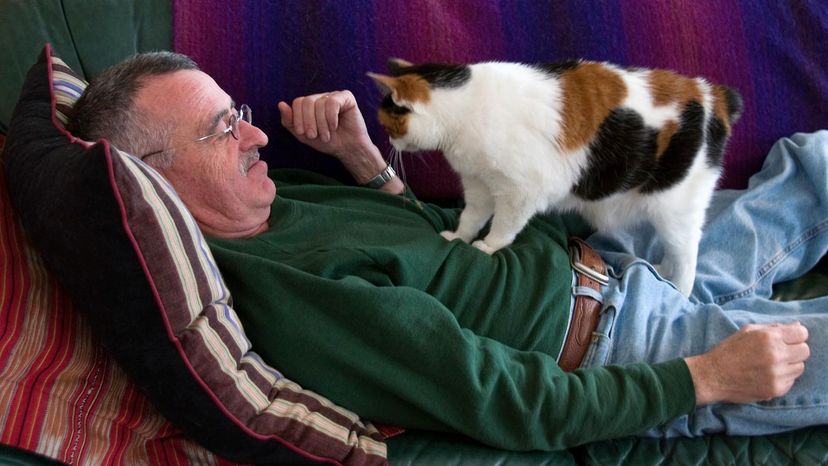 “Cats knead for various reasons, but mostly to show you they’re happy and content. ADavey/Flickr/(CC BY 2.0)
“Cats knead for various reasons, but mostly to show you they’re happy and content. ADavey/Flickr/(CC BY 2.0)
It never fails. You sit down on the couch for an evening of nonstop streaming of your favorite series or — even better — with a book and a cup of tea. And here comes your furry feline friend with an intent look on her face and a purr at the ready.
She happily places her paws just so on your leg and starts kneading, rhythmically pressing her little front feet into your soft flesh. It’s cute, even if it does kind of hurt sometimes. Mostly because she’s so dang happy. But why does she do it?
Baby, We Were Born to Knead
Kittens are born with an instinct to knead. As tiny little fuzzballs, they press into their mother’s belly while they nurse. This action stimulates the milk to come out of her nipple and feed the baby kitty. This is called "milk treading," which is less adorable than the more common term "making biscuits." While they’re tucked up against mom, the kitten is warm — and being fed — and feeling very content.
Even after kittens are weaned, they continue this little two-paw dance when they’re happy. (Some cats get really into it and knead with all four paws.) People used to believe that adult cats kneaded because they were weaned too early, but that seems unlikely. Almost all cats knead, no matter when they were weaned. Many cats do it even if they grow up in the same house along with their mom.
I Put a Scent on You
There are other reasons why cats knead, though. Cats have scent glands near their cheeks, at the base of their tail and — you guessed it — in the pads of their paws. Kneading a blanket, a pillow or your stomach as you lie on the couch watching Netflix together leaves behind a trace of your cat’s particular scent. She’s marked you and probably every soft thing in the house as hers, and she’s not wrong.
There’s another theory that this action comes from ancestral cats who lived outdoors, with nary a pillow or lap to their name. They would knead to trample any grasses and rough up the ground to make it soft enough for sleeping. It’s similar to the theory about why dogs turn around in circles before settling down to sleep.
Now That’s Claw-ful!
When a cat uses her claws while she kneads your squishy flesh or your new couch, it’s tempting to punish her. But kneading is a natural behavior that means she’s happy, so punishment is not a great idea here. Instead, see if you can gently press your cat down to a laying position. She’ll likely go to sleep. If her kneading is problematic for your skin or upholstery, keep her claws trimmed or invest in plastic claw sheathes. And never declaw her.


































